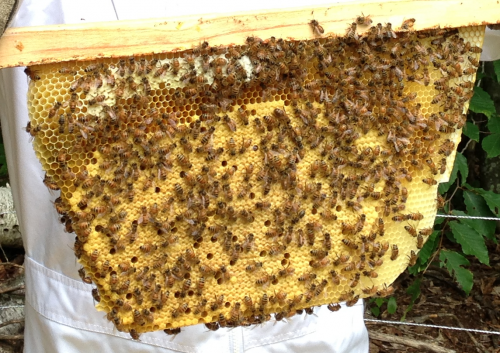7 Frames full of brood recto verso. Looks like the queen finally took it upon herself to lay some serious egg. In the course of next week I expect the colony to triple in size which will put us on par with last season.
Freedom rangers
25 of them and they all made it through the bowels of USPS. As I introduced them to their new living quarters, I dipped their beaks into the water so they knew where it was right away. They were all quite thirsty traveling all the way from Pennsylvania.
We ordered them from Freedom Ranger Hatchery (have a link), they were excellent to deal with.




